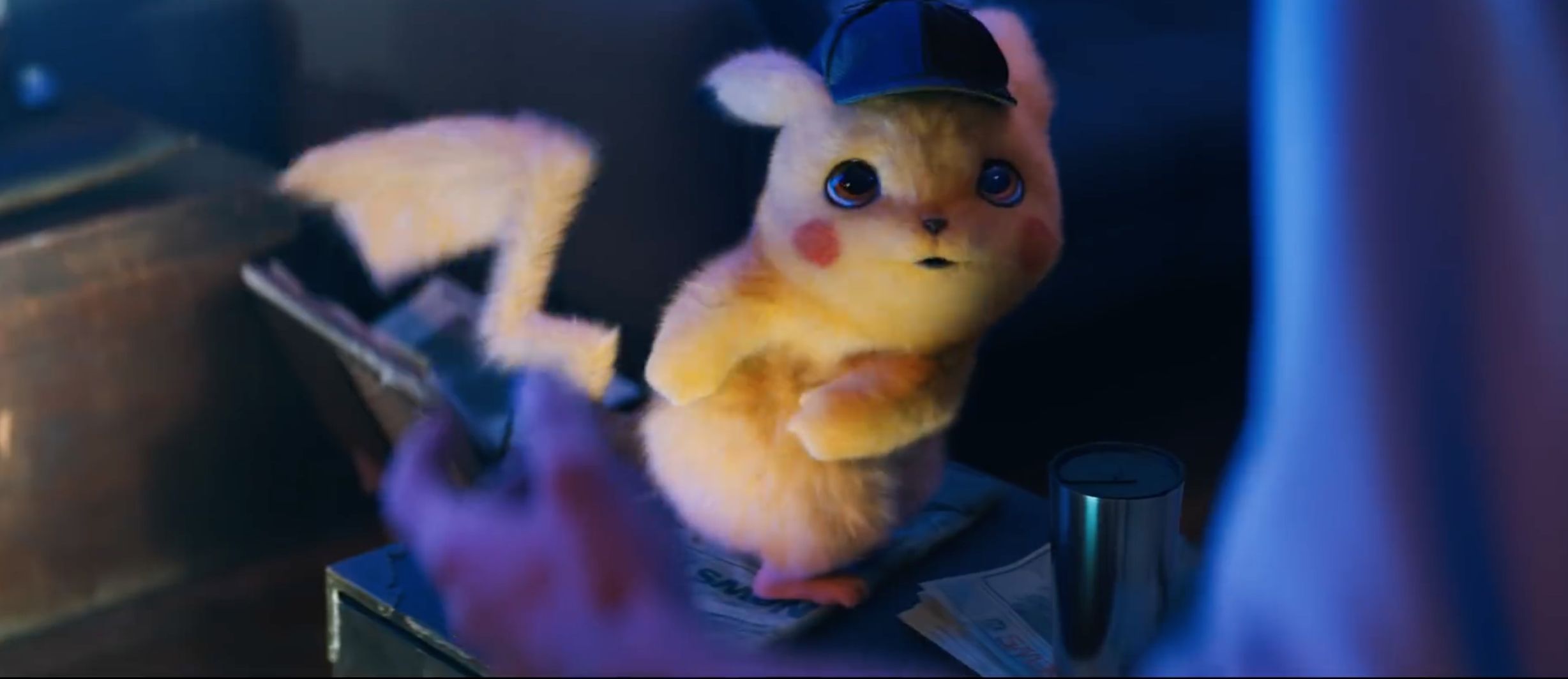Create a free profile to get unlimited access to exclusive videos, sweepstakes, and more!
Science Behind the Fiction: How Pokémon existing IRL would change the world

With the big-screen release of Pokémon Detective Pikachu, we'll finally get to see all of our favorite adorable fighting creatures living in the real world. Or at least a real world.
It makes a certain amount of sense why the franchise might have been resistant to make the jump from animation to live-action until now. There are certain elements of the Pokémon world that work well in a cartoon setting but might be problematic or strain suspension of disbelief when presented as legitimately real.
Detective Pikachu attempts to address some of these issues in the way it lays out Ryme City and its inhabitants. Foregoing the more recognizable landscape of the core games and characters, Detective Pikachu presents a city closer to Blade Runner than Pallet Town. Pokémon battles are banned, occurring only underground and in secret, and Pokémon live alongside their human counterparts, roaming the darkened streets of the city.
All of this amounts to a setting that feels less like a cartoon brought to life and more like a place in the real world, one that just happens to be inhabited by cartoon characters. But we can take that a little further. Here are a few other ways that our world would be changed if Pokémon were real.
SERVICE POKÉMON
Here on Earth, service animals serve a vital role for all manner of people, working as guide dogs or other service animals, or perhaps working with police or government agencies. In a world like the one presented in the Pokémon franchise, with its many varied species equipped with any number of incredible talents, this role would only be increased.
The visually impaired of Ryme city might employ the use of a Luxray, a powerful Electric-type Pokémon resembling a blue and black lion with a star-tipped tail. Similar in body structure to a dog, the Luxray would be a suitable stand-in for the guide dogs of Earth, and its incredible vision, capable of seeing through solid objects, would make it ideal for the job.
Likewise, the hearing-impaired might pair well with an Audino, a Normal-type Pokémon, though it is far from normal. Its hearing is so powerful it can hear the heartbeat of nearby Pokémon (and people). Its hearing is so advanced it can even determine emotions and overall well-being, a useful trait in a service animal.
While the question of emotional support animals and their validity has been in the news of late, after one passenger attempted to bring a peacock onto an airplane, the situation would ratchet all the way to 11 in a Pokémon-inhabited world.
The good news is that those persons in need of an emotional support companion would find the perfect solution in Ralts, a Psychic/Fairy-type Pokémon capable of reading people's emotions. It might also be useful in other social settings, as it reacts positively to those exhibiting positive feelings and hides at any sign of hostility.
ARMED CONFLICT
War has always been a game orchestrated by those with power but played by others. Throughout human history that has meant armies populated by those within lower socioeconomic tiers, taking orders from those above. So it's easy to see how, given use of a group of effective warrior animals, we might send them to fight in our stead.
Warfare would then become a matter of who had the most, and most powerful, Pokémon armies and could use them most effectively.
We can imagine treaties signed (yet largely ignored) banning the breeding, training, and use of legendary Pokémon. But, even leaving them out of the equation, there's no end to the horrible ways humans could put Pokémon to use on the battlefield.
A small group of Ditto could transform and infiltrate even the most secure military installations and, if compromised, turn themselves into innocuous, impossible-to-discover inanimate objects. Imagine a slowly trudging, self-replicating, army of Grimer who can't be hurt by any traditionally recognizable weapons and whose numbers grow exponentially. Gardevoir can defy gravity and create small singularities. This would be, to put it lightly, incredibly, horrendously, terrifyingly dangerous.
According to Frank Heile, Ph.D in physics from Stanford, a black hole the size of a coin would could destroy the Earth. While not all of the planet would be consumed (a small comfort considering what comes next) it would be utterly destroyed. What wasn't consumed would be vaporized by immense radiation.
This sort of power makes anything created by human hands laughable. And while we can probably count on world governments to at least pretend not to utilize those types of weapons, the same can't be said by any underground criminal element.
In a world filled with mustachioed lion-dogs capable of creating volcanoes with their barks, and even more impressively mustachioed spoon-wielding psychics with off-the-charts IQs, it wouldn't take long for organized crime to recognize the utility of Pokémon bodyguards and personal militias.
Living in a world inhabited by Pokémon would mean walking on Togepi shells and waiting for the world to end.
FREE, CLEAN ENERGY (SORT OF)
Humanity is in a constant race to meet its own energy needs. Our demands, especially in the developed world, are ravenous and cause us to make some questionable (read ill-advised) decisions regarding fossil fuel consumption.
All of that would be a thing of the past the moment Pokémon enter the equation. There are scores of electric Pokémon capable of generating energy fields for attack and defense, but some can do so much more. Heliolisk is an otherwise unassuming Pokémon that looks like a lizard wearing a Shakespearean collar.
The energy generated by Heliolisk is substantial. Though usually used for its own means, allowing it to move quickly, it is capable of powering a skyscraper without flinching. Given its relatively small size, one could imagine how a modest gathering of these adorable 'mons could be used to provide power to a city.
While this might, on the surface, seem a perfect (if thermodynamically unsound) way of getting around an energy crisis and avoiding fuel emissions, the logical conclusion is a Heliolisk slave state wherein they are forced into a life of servitude pumping out juice for their human masters. Imagine rows and rows of adorable gilded lizards running on treadmills or hooked to conductors, their screams converted to the churning of a coffee grinder.
It isn't ideal. And given the power we know to be present in other Pokémon, it wouldn't be our smartest move, not that that's ever stopped us from pursuing our energy needs.
THE MANY USES OF POKÉ BALLS
There is some speculation about precisely how a Poké Ball works, but the specific mechanics aren't important in order for them to reshape the world. While some believe they work by shrinking the Pokémon and holding them inside, others believe they convert matter to energy and hold them in stasis in a digitized state.
In any event, they amount to the ability to take matter, sometimes a lot of it (the heaviest Pokémon weigh in excess of one ton), and carry it in your pocket or on your belt. It's an incredible ability that is most often glossed over in the course of storytelling.
The characters in the Pokémon universe seem to utilize this technology primarily for carrying around their battle teams without any consideration for the larger implications. It's clear that Poké Balls are readily available, such that children can have them in spades.
Such technology could revolutionize the housing crisis, providing cheap and safe housing for millions of people. Waste disposal would be a thing of the past, in terms of both trash and plumbing. Transport and distribution would see a renaissance. Imagine the economic implications of being able to transport tons and tons of materials on a single truck, or moving fuel and materials to the international space station. The reduction in payload would take us to the stars. If the digitization hypothesis is correct, it could even allow us to explore the galaxy in a suspended state.
The existence of intelligent, super-powered entities is world-changing in its own right, but the accompanying technology would lead humanity into a new age, just so long as we could avoid destroying ourselves in Pokémon-powered battle long enough.



























